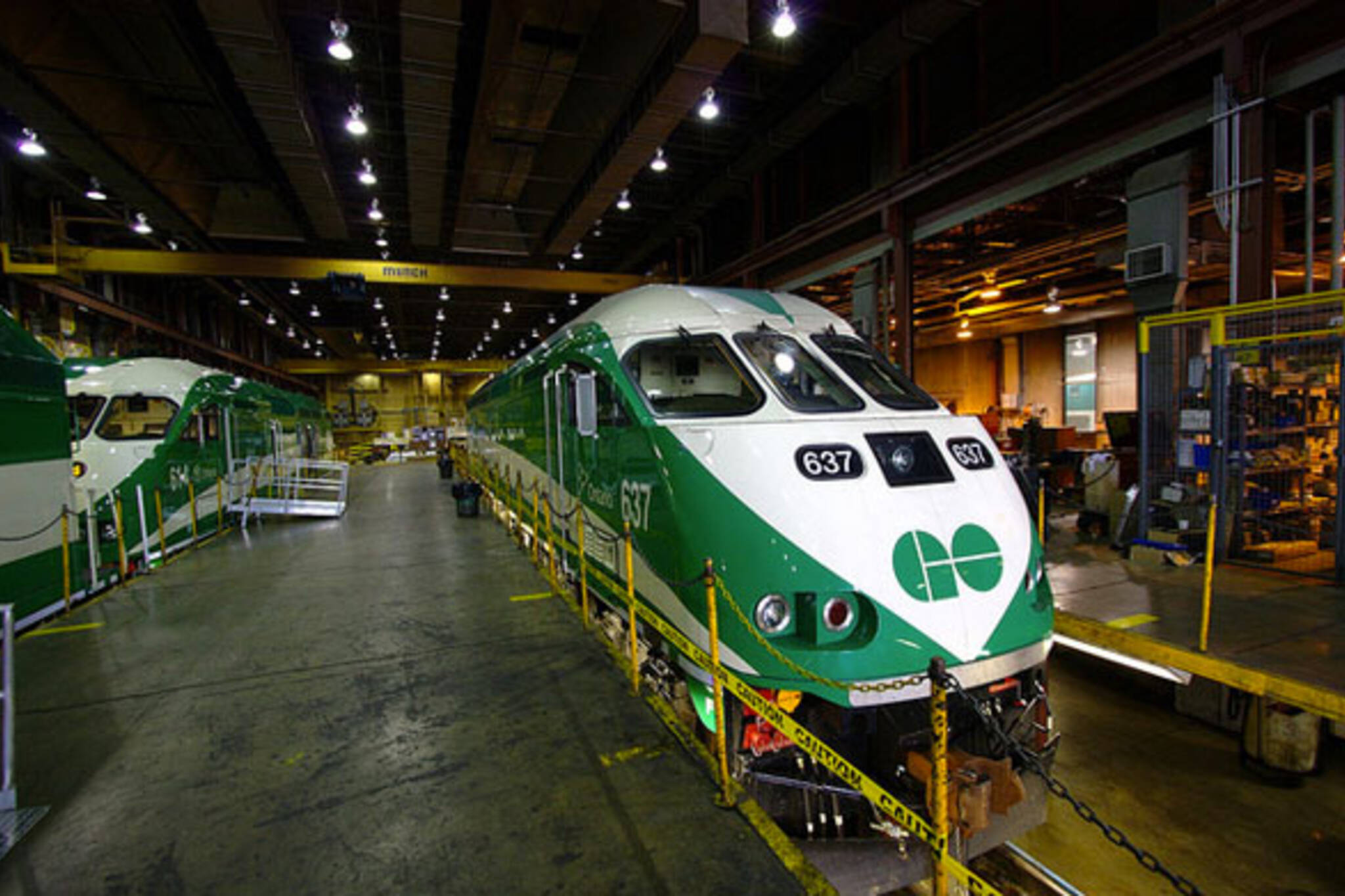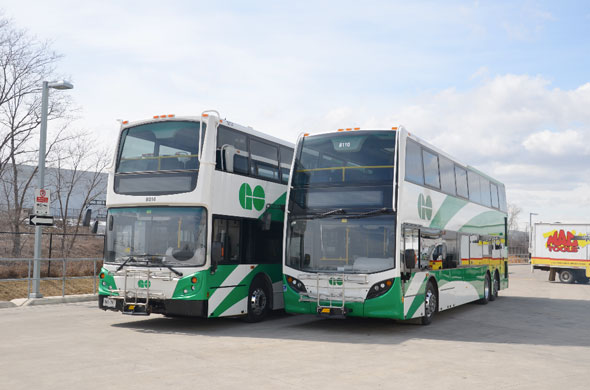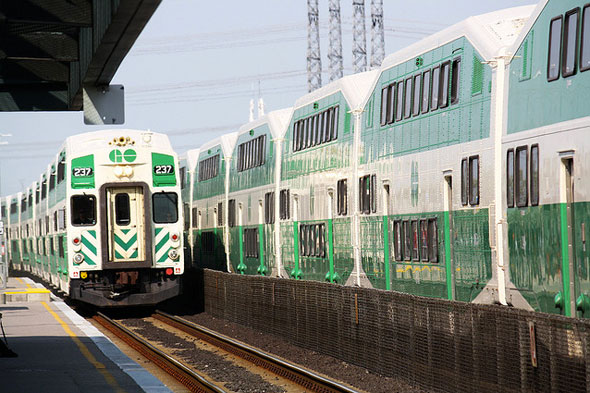
By the numbers: The GO Transit fleet
Metrolinx and its subsidiary GO Transit is on the threshold of a major expansion, unprecedented in its 50-year history. With the Eglinton-Crosstown LRT under construction and the provincial government seeking ways to pay for $50 billion in new bus, light rail, and subway lines, we should be seeing much more green-and-white in the coming decades.
With that in mind - and the fact GO just took possession of the first in a fleet of new double-decker buses - I thought it was time to take look at the fact sheet on Toronto's other transit provider.
GO BUSES

Thanks to the new additions to their road fleet, GO now owns and operates 463 buses, 47 of them double-decker. The bulk of the agency's highway vehicles are run on diesel, but it does operate a pair of hybrid vehicles for use exclusively on highways. Here's the skinny on GO's biggest fleet:
Total vehicles: 463
Single-decker: 414
Double-decker: 47 (including 24 vehicles on order)
Diesel-hybrid electric: 2
Single-decker capacity: 57 passengers
Old double-decker capacity: 78-80 seated passengers
New double-decker capacity: 81 passengers
New double-decker height: 4.15 metres
New double-decker length: 13.2 m
New double-deckers required to move a capacity Rogers Centre crowd: 666.6
Cities using the ADL Enviro 500: Vancouver, New York, Hong Kong, Washington D.C., Las Vegas
Safe operating range: 900 kms (Union Station to North Chicago, an outer suburb of Chicago)
GO TRAINS

The most famous GO vehicle, the double-decker, diesel-powered trains have been formed the core of the provincial transit agency's fleet for decades. In the early days the rolling stock was entirely single-level. Currently, GO trains serve 63 rail stations, on 450 kilometres of track, spread over 7 lines out of Union station.
The vehicles are maintained at the company's Willowbrook facility just north of Islington and Lake Shore. The site includes storage tracks for 21 trains and workshops for both locomotives and passenger cars.
Total locomotives in fleet: 65
Coaches in fleet: 560
Capacity per coach: 162 people (1944 per full 12-car trainset)
Full 12-car trainsets required to move a capacity Rogers Centre crowd: 28
Length of locomotive: 20.73 metres
Height of locomotive: 4.97 m
Weight of locomotive: 129 tons
Coach weight: 49 tons (empty)
Toronto Rockets needed to balance a 12-car trainset on a (giant) set of scales: 2.6
Size of fuel tank: 8,410 litres
Medium Tim Hortons' cups required to empty fuel tank by hand: 28,425.8
Horsepower: 4000 (32.5 times the power of a H-6 subway train)
Chris Bateman is a staff writer at blogTO. Follow him on Twitter at @chrisbateman.
Images: GO Transit, Vic Gedris, Danielle Scott/blogTO Flickr pool.
Latest Videos
Latest Videos
Join the conversation Load comments







